"Stampede" Rule: In search of the next target.
| This publication was also writen in ENGLISH and PORTUGUESE . |
|---|

Hello this post is a onboard introduction project from BR audience, PORTUGUESE VERSION AT THE END.
Hello! Everyone, Today I will talk here at @dreloop07 about another important battle rule in terms of offense within @splinterlands. In this case, the "Stampede" rule, but before taking advantage of this rule, it is important to understand how its dynamics and influence work within the game.
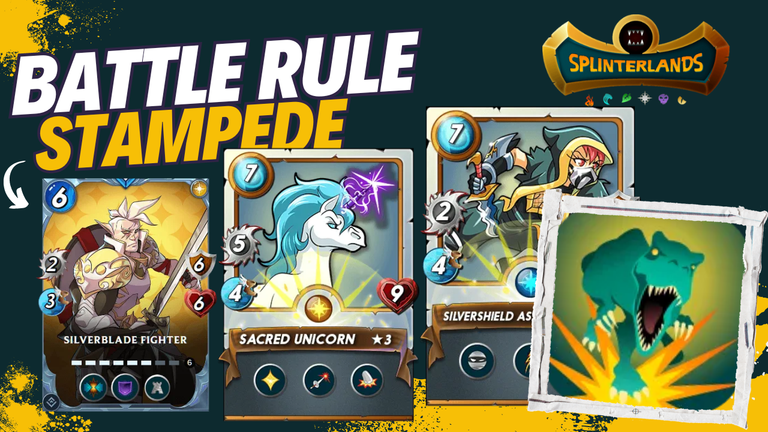
As many of you know, battle rules play a crucial role in defining the outcome of a match. Each battle rule changes the normal battle conditions, forcing players to adapt their strategies and choose cards that work best with the new Conditions. One of these rules, which can completely change the course of a battle, is the "Stampede".
| Symbol | rule | Effect |
|---|---|---|
| Stampede | Trample will be reactivated infinitely as long as the trampling unit continues to kill other units. |
This rule has a direct impact on the "Trample" ability. Normally, when a card with "Trample" defeats an opponent, it immediately attacks the next card in the Opponent row, thus dealing extra damage. However, this happens once per round. With the "Stampede" rule, the offensive potential of "Trample" is amplified: the ability can be activated multiple times in a single turn, allowing a single Card to cause "cascading damage" if it manages to eliminate several targets consecutively.
With this, the Trample ability turns the "Stampede" rule into a powerful tool for players who can correctly align their strategies with this rule. Instead of just one devastating blow, a Card with “Trample” can wipe out an entire deck, attacking repeatedly until there are no more opponents or the sequence of attacks is interrupted by a more defensively resistant Card to survive the impact.
Battle strategy:
Now! Thinking about strategy, I came across a game in which I had 32 mana available. In addition to the “Stampede” rule that gives offensive effects to “melee” cards, “Aimless” was another rule that greatly influenced this.
| Energy | Battle rules | Effect |
|---|---|---|
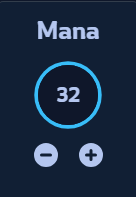 | 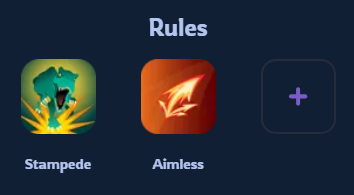 | 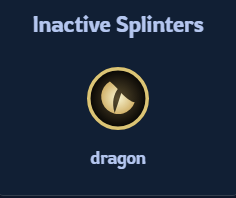 |
In terms of deck, the only thing you can't count on is the dragon deck. I believe the key to increasing the effectiveness of the Stampede rule is to ensure that your Trample cards can eliminate their targets in a single hit. This means that decisions about which cards to use and how to position them on the field become even more critical. Below, we explore some strategies to make the most of this rule:
https://splinterlands.com/?p=battle&id=sl_5823b4b8a78d7d21689f92e3de5ede38&ref=dreloop07
As the summoner I chose “Chanseus” and of course, to ensure that your cards with “Trample” can trigger multiple attacks in a single turn, it is vital to increase its attack power. However, for this matchup I opted for a more supportive option, since I thought that the opponent could also make good use of “Trample”’s potential.
| Summoner | Chanseus the Great light 3 |
|---|---|
 | Summoner of the Life deck with abilities; “repair”, “triage” and “Resurrect”. |
For the first position I chose the "Silverblade light 6", creatures with abilities like "Protect" or "Void armor", which reduce physical or magical damage received, can interrupt the attack chain provided by "Trample". Therefore, it is important to eliminate or neutralize these threats before trying to trigger a chain with "Trample."
| Tank | Silverblade Fighter light 6 |
|---|---|
 | Life deck card with abilities: "Flank", "Void armor", "protect". |
For the second position, the "Sacred" creature positioning is always critical in Splinterlands, but with the "Stampede" rule, it becomes even more important. Placing your creature with "Trample" in the first position will ensure that it is in the front line, ready to trigger the chain of attacks as soon as an opposing card is defeated, but in this case necessarily due to my first card having the "flank" ability,I put my card with "trample" in this position. In addition, it has health protection with support from both the summoner and the "heal" ability itself.
| 2nd position | Sacred Unicorn light 3 |
|---|---|
 | Legendary card from the Life deck with abilities: "heal", "Piercing" and "Trample" |
For the next two positions I chose "Silvershield" and "Stitch". To also seek offense in more backward positions, since with this rule I focus more on attack in the first position. Mainly with the offense of "double strike" and "poison" from "Silvershield". In addition to the protection from "leech" from "Stitch".
| 3rd position | Silvershield Assassin light 5 |
|---|---|
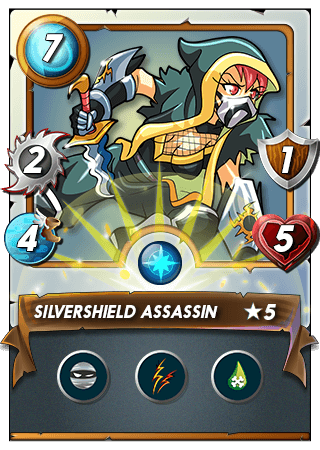 | Life deck card with abilities "sneak", "double strike" and "poison" |
| 4th position | Stitch Leech light 8 |
|---|---|
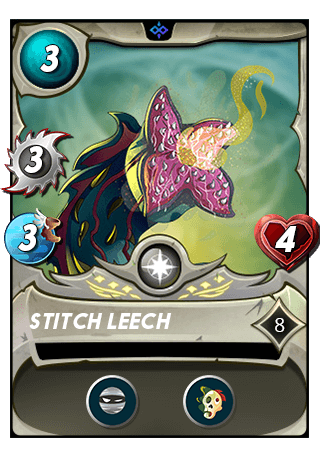 | Life deck card with abilities: "sneak" and "life leech" |
Of course, the damage under the "Stampede" rule, its durability and ability to ignore part of the damage taken make it a pillar in any formation that wants to exploit this rule to the fullest.
Thoughts:
So that's it for you guys, I hope you enjoyed the "Stampede" battle rule in Splinterlands. It introduces an additional layer of strategy and explosive damage potential in matches where the "Trample" ability is present. Thank you very much for your appreciation and see you next time...
PORTUGUESE VERSION

Regra "Stampede": Em busca do proximo alvo.
Olá! Pessoal, Hoje falarei aqui no @dreloop07 de mais uma importante regra de batalha em termos de ofensividade dentro do @splinterlands. No caso a regra "Stampede", mas antes de tirar proveito desse regra é importante entende como funciona sua dinâmica e influência dentro do game.

Como muitos de vocês sabem, as regras de batalha desempenham um papel crucial na definição do resultado de uma partida. Cada regra de batalha altera as condições normais de batalha, obrigado os jogadores a adaptarem suas estratégias e a escolherem cartas que melhor funcione com as novas Condições. Uma dessas regras, que pode transformar completamente o curso de uma batalha, é a "Stampede".
| Simbolo | regra | Efeito |
|---|---|---|
| Stampede | Trample será reativado infinitamente enquanto a unidade atropeladora continuar matando outras unidades. |
Nessa regra, tem um impacto direto na habilidade "Trample". Normalmente, quando uma carta com "Trample" derrota um oponente, ela ataca imediatamente a próxima carta na fila Adversaria, dessa forma causando dano extra. Porem, isso acontece uma vez por rodada. Com a regra "Stampede", o potencial ofensivo do "Trample" é ampliado: a habilidade pode ser ativada múltiplas vezes em um único turno, permitindo que uma única Carta cause "efeito cascata de danos" se conseguir eliminar vários alvos consecutivamente.
Com isso, a habilidade Trample transforma a regra "Stampede" em uma ferramenta poderosa para jogadores que conseguem alinhar corretamente suas estratégias a essa regra. Em vez de apenas um golpe devastador, uma Carta com “Trample” pode varrer um baralho inteiro, atacando repetidamente até que não haja mais adversários ou que a sequência de ataques seja interrompida por uma Carta mais resistente defensivamente para sobreviver ao impacto.
Estratégia de batalha:
Agora! Pensando em estratégia me deparei com uma partida na qual possuia na qual tinha 32 de manas disponíveis. Além da regra "Stampede" que efeitos ofensivos sobre as cartas "melee", o "Aimless" foi outra regra que influenciou bastante nesse sentido.
| Energia | Regras de batalha | Efeito |
|---|---|---|
 |  | 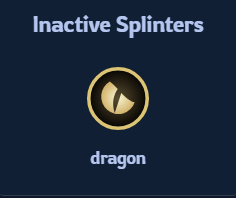 |
Em termos de "deck", só não pode contar com o deck do "dragon" . Acredito que o segredo para aumentar a eficácia da regra "Stampede" é garantir que suas cartas com "Trample" possam eliminar seus alvos em um único golpe. Isso significa que as decisões sobre quais cartas utilizar e como posicioná-las na arena tornam-se ainda mais críticas. Abaixo, exploramos algumas estratégias para tirar o máximo proveito dessa regra:

https://splinterlands.com/?p=battle&id=sl_5823b4b8a78d7d21689f92e3de5ede38&ref=dreloop07
Como invocador escolhi o “Chanseus” é claro que para garantir que suas cartas com “Trample” possam desencadear múltiplos ataques em um único turno, é vital aumentar o seu poder de ataque. Mas para essa partida optei por uma opção mais de suporte, já que pensado que o adversário poderia também se utilizar bem do potencial do “Trample”.
| Invocador | Chanseus the Great leve 3 |
|---|---|
 | Invocador do deck da vida com habilidades; “repair”, “triage” e “Resurrect”. |
Para primeira posição escolhi o "Silverblade leve 6", criaturas com habilidades como "Protect" ou "Void armor", que reduzem o dano físico ou mágico recebido, podem interromper a sequência de ataques proporcionada pela "Trample". Portanto, é importante eliminar ou neutralizar essas ameaças antes de tentar desencadear uma sequência com a "Trample."
| Tanque | Silverblade Fighter leve 6 |
|---|---|
 | Carta do deck da vida com habilidades: "Flank", "Void armor", "protect". |
Para segunda posição, o "Sacred" o posicionamento das criaturas é sempre crítico em Splinterlands, mas com a regra "Stampede", torna-se ainda mais importante. Colocar sua criatura com "Trample" na primeira posição garantirá que ela esteja na linha de frente, pronta para desencadear a sequência de ataques assim que uma carta adversaria for derrotada, mas nesse caso necessariamente devido a minha primeira carta ter a habilidade "flank", coloque minha carta com "trample" nessa posição. Além disso,ela tem uma proteção na saúde com suporte tanto do invocador como da própria habilidade "heal".
| 2 posição | Sacred Unicorn leve 3 |
|---|---|
 | Carta lendária do deck da vida com habilidades: "heal", "Piercing" e "Trample" |
Para as duas próximas posições escolhi o "Silvershield" e "Stitch". Para buscar também ofensividade em posições mais recuadas, já que com essa regra foco maior de ataque na primeira posição. Principalmente com a ofensividade do "double strike" e "poison" do "Silvershield". Além da proteção do "leech" do "Stitch".
| 3 posição | Silvershield Assassin leve 5 |
|---|---|
 | Carta do deck da vida com habilidades "sneak", "double strike" e "poison" |
| 4 posição | Stitch Leech leve 8 |
|---|---|
 | carta do dekc da vida com habilidades: "sneak" e "life leech" |
É claro que os estragos sob a regra "Stampede", sua durabilidade e capacidade de ignorar parte do dano recebido o tornam um pilar em qualquer formação que deseje explorar essa regra ao máximo.
Considerações:
Então é isso ae galera, espero que tenham gostado da regra de batalha "Stampede" no Splinterlands introduz uma camada adicional de estratégia e potencial de dano explosivo em partidas onde a habilidade "Trample" está presente. Muito obrigado pelas apreciações e até a próxima...
Ah, Bzzz-rrr, @dreloop07, eu estava esperando isso! Stampede é uma regra bem poderosa, mas é fundamental entender como ela funciona para não dar um latação na hora errada! Boa discussão, pessoal! #hivebr
muito obrigado pelo apoio
Obrigado por promover a comunidade Hive-BR em suas postagens.
Vamos seguir fortalecendo a Hive
Delegate Tokens and HP to Fallen Angels to earn weekly rewards!
Delegate | Join to the guild
Your post was manually curated by @Shiftrox.
Delegate your HP to the hive-br.voter account and earn Hive daily!
🔹 Follow our Curation Trail and don't miss voting! 🔹
Thanks for sharing! - @mango-juice
